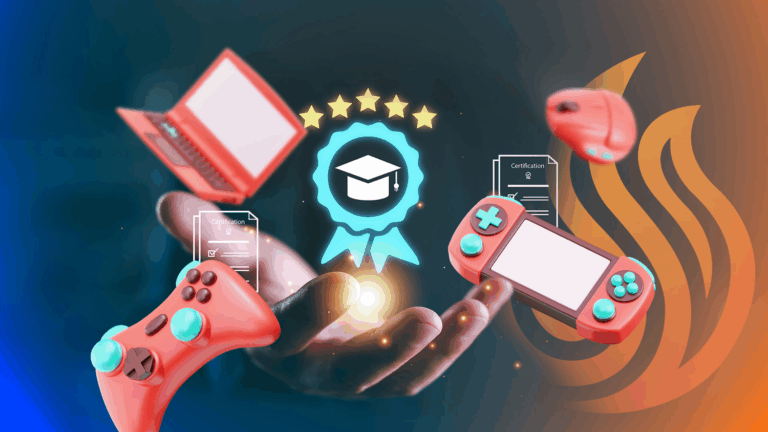Games have been a fundamental part of human culture for centuries, from ancient board games like Chess to modern video games like Fortnite. While the technologies and platforms have evolved, one thing remains constant: the desire to play and engage with games. Game designers are tasked with creating experiences that captivate players, keep them coming back for more, and leave them feeling satisfied. To achieve this, it’s important to understand the motivations that drive players and how to harness them in game design. Understanding player motivation in game design is critical to harnessing engagement and success.
The Psychology of Player Motivation
To design games that resonate with players, you must first understand the underlying psychology of what makes people want to play games. Various psychological theories offer insights into, but one that particularly stands out in the realm of game design is Self-Determination Theory (SDT).
SDT posits that human motivation is fueled by three innate psychological needs: autonomy, competence, and relatedness. Let’s break down these concepts and see how they apply to game design:
- Autonomy: Players desire a sense of control over their actions and decisions within a game. Game designers can achieve this by offering choices, branching narratives, and open-world exploration. When players feel like they have freedom to make their own choices, they become more invested in the game.
- Competence: People have an intrinsic desire to feel competent and capable. In game design, this translates to gradually increasing the difficulty level to match a player’s skill progression. Games that are too easy become boring, while those that are too hard can be frustrating.
- Relatedness: We are social creatures, and our need to connect with others extends to the gaming world. Multiplayer games, leaderboards, and cooperative modes tap into this need for relatedness, fostering a sense of community and competition.
Understanding and catering to these psychological needs can significantly enhance player motivation and engagement in your games. However, it’s also important to recognize that different players have different motivations. Some may be driven by the thrill of competition, while others seek immersive narratives or a relaxing escape from reality.
Player Agency: Empowering the Player
One of the key elements that contribute to player motivation and engagement is the concept of player agency. Agency refers to the player’s perception that their actions have a meaningful impact on the game world. When players feel that their choices matter, they become more invested in the game.
To create a sense of agency in game design, consider the following strategies:
- Meaningful Choices: Offer players choices that affect the game’s narrative, outcome, or gameplay. These choices should be more than superficial and should lead to different consequences.
- Feedback: Provide clear and immediate feedback to the player’s actions. Feedback helps players understand the consequences of their choices and encourages them to make more informed decisions.
- Consequences: Ensure that the choices players make have consequences, both positive and negative. Consequences add depth and meaning to the player’s decisions and can lead to emotional engagement.
- Progression Systems: Implement progression systems that allow players to see their growth and improvement over time. This can be through character development, leveling up, or unlocking new abilities.
By incorporating player agency into your game design, you empower players to become active participants in the gaming experience. This sense of control and influence can be a powerful motivator, keeping players engaged and eager to see how their choices shape the game world.
The Challenge-Skill Balance
Another critical aspect of player motivation and engagement in game design is finding the right balance between challenge and skill. This concept is often referred to as the “flow state,” which occurs when a player is fully immersed in a game, feeling neither overwhelmed nor bored.
To achieve this balance, consider the following principles:
- Progressive Difficulty: Start with simple challenges and gradually increase the complexity and difficulty as players become more skilled. This progression keeps players engaged and motivated to improve.
- Adjustable Difficulty: Allow players to adjust the game’s difficulty to suit their skill level. This can be achieved through difficulty settings, assist modes, or dynamic scaling based on player performance.
- Clear Goals: Provide clear objectives and goals for players to pursue. Knowing what they are working toward gives players a sense of purpose and direction.
- Feedback Loop: Establish a feedback loop that informs players of their progress. Whether it’s through scoring, achievements, or visual cues, feedback helps players gauge their performance and stay motivated.
Balancing challenge and skill is a delicate art in game design. The goal is to keep players in that sweet spot where they are continuously challenged but not overwhelmed.
In the realm of game design, understanding player motivation and engagement is a fundamental skill. By delving into the psychology of player motivation, empowering players, and striking the right balance between challenge and skill, game designers can create experiences that captivate, entertain, and leave players coming back for more.
Prepare for Your Dream Career at USV
Becoming a video game designer requires a combination of passion, creativity, technical skills, and industry knowledge. If you dream of becoming a video game designer and creating amazing and memorable characters, University of Silicon Valley can help you turn that dream into reality.
We can prepare you for success in the creative-technology industries by providing a real-world education inspired by the entrepreneurial spirit of our Silicon Valley location. We also offer our courses in Game Design and Development online.
Check out our renowned Bachelor of Arts in Game Design program, and apply now, request more info, or come visit our campus. Get ready to take your gaming skills to the next level.


